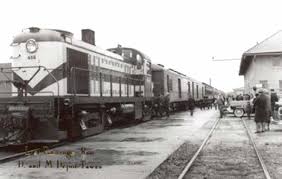
Michigan Railroad Commission
The Michigan Railroad Commission was an agency in Michigan that regulated the operation of railroads within the state. It was founded by the Michigan Legislature in 1873; in 1919, it was abolished and its functions were transferred to a new body, the Michigan Public Utilities Commission. The office was established in 1873 as part of a general reform of state rail laws. One requirement was that each public railway company submit an annual report to the commission, which was then collected and published. These reports were published every year from 1873 until the abolition of the commission in 1919 and remain an important source for historians. Since 1905, the commissioner has had some degree of control over the state police; this need, apparently, was caused by a sharp increase in the number of accidents involving new electrical interbans. In 1907, a revision of the law expanded the office; the only commissioner was replaced by a group of three. This was due to the conviction of the then commissioner Chase Osbourne, who believed that the system of a single commissioner was outdated, that a “modern type” of commission was necessary with great powers of intervention. To ensure greater continuity in politics, three members of the commission will serve a six-year term with a gradual break. The Commission also received the authority to enforce state rate rules and resolve disputes between companies regarding the application of these rates. The commission remained structured until it was replaced in 1919 by the Michigan Public Services Commission, which did not retain the name, and not one of the seated railroad commissioners worked in the new body.
